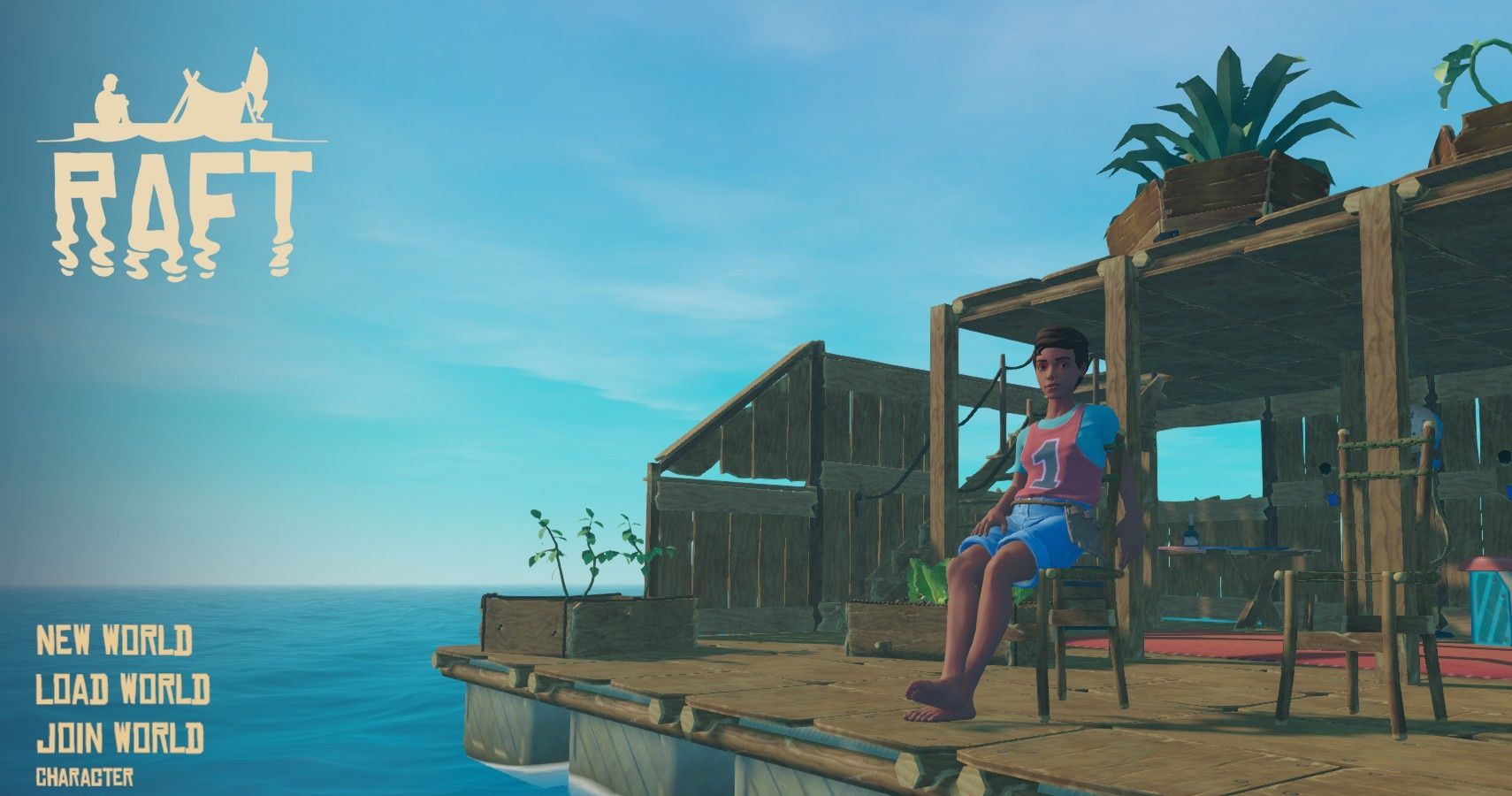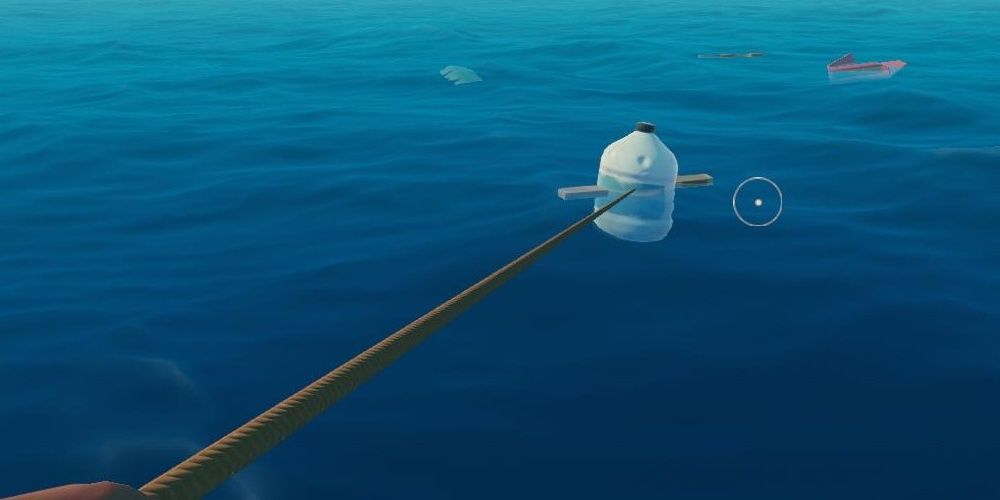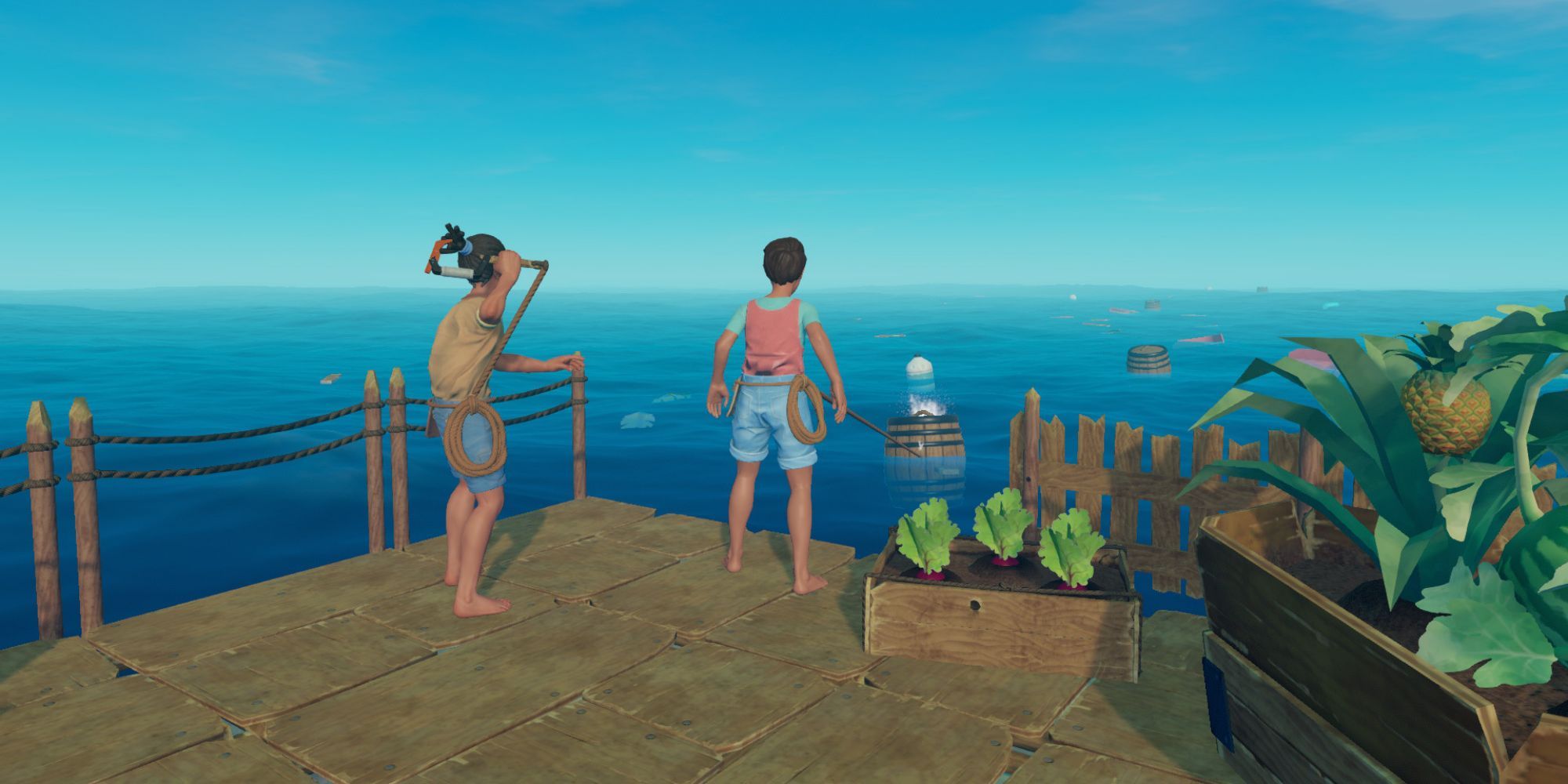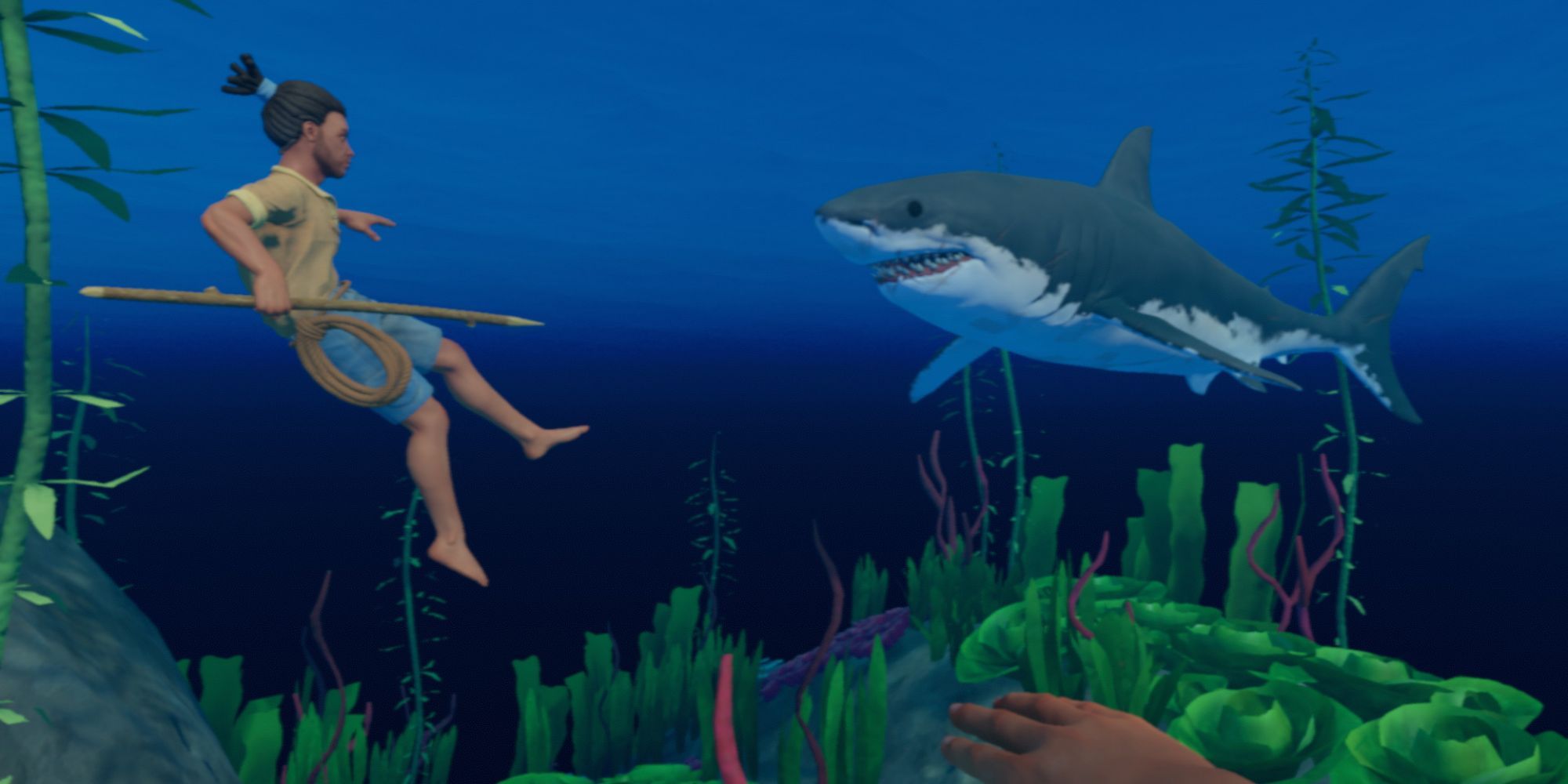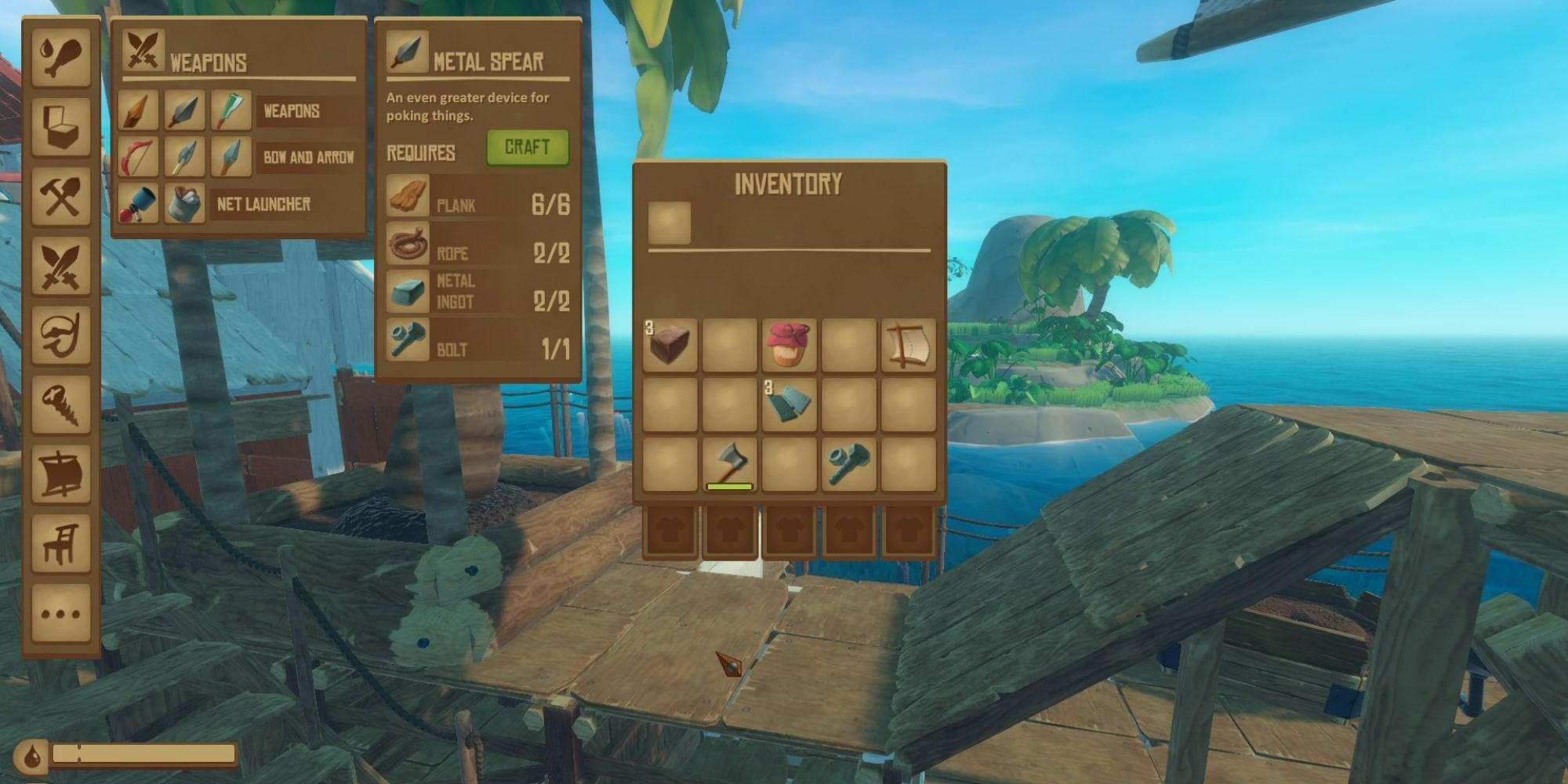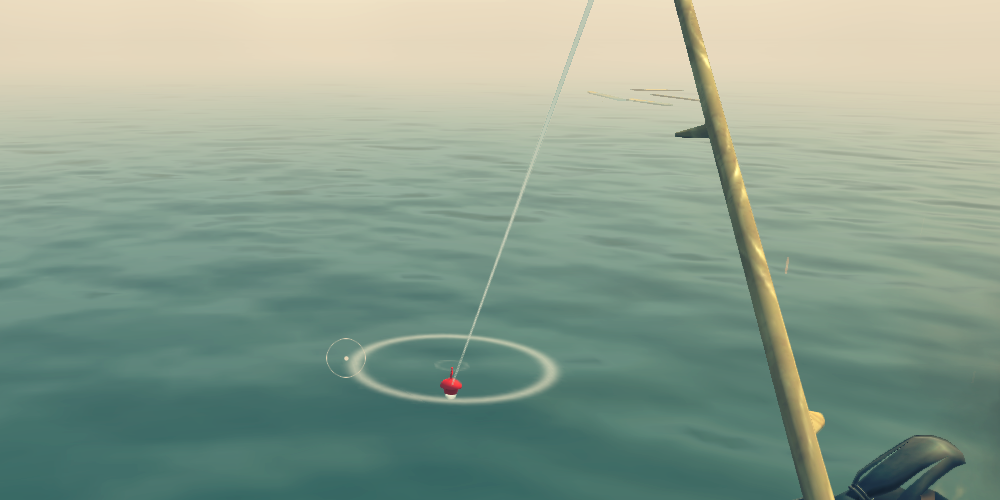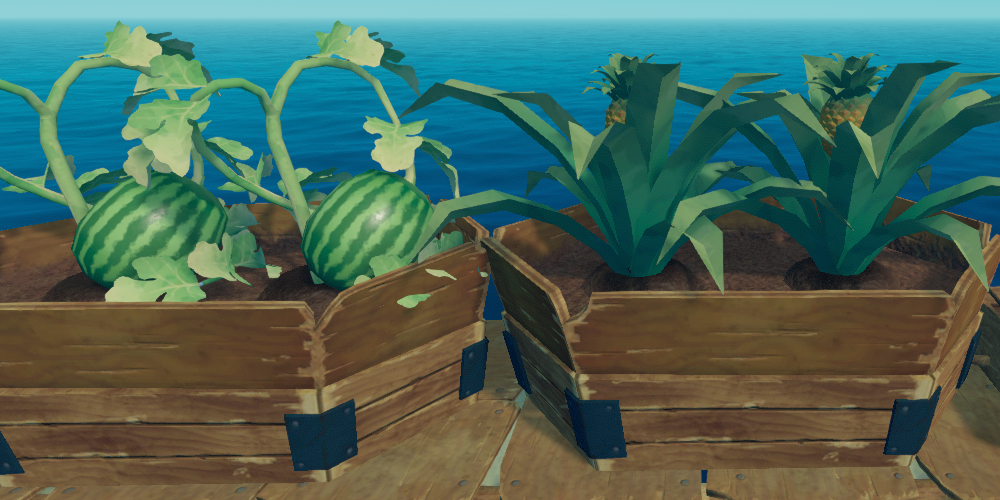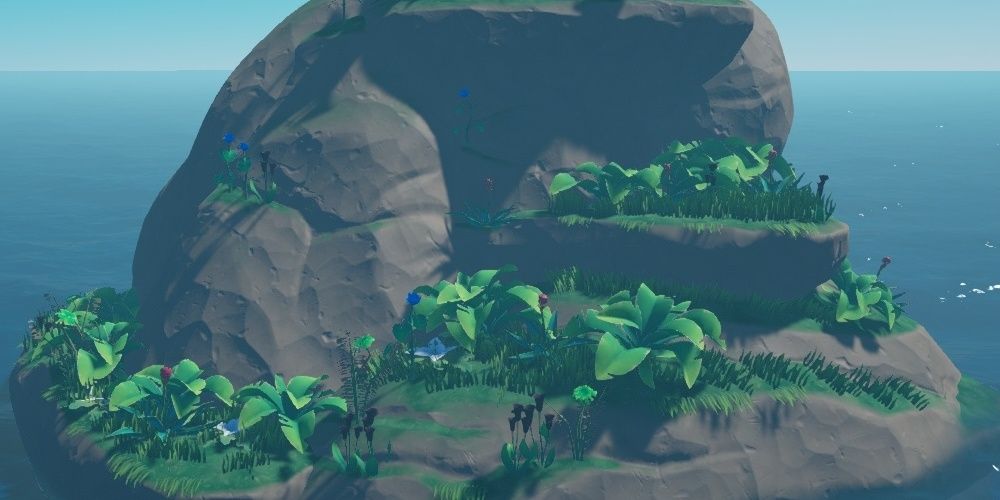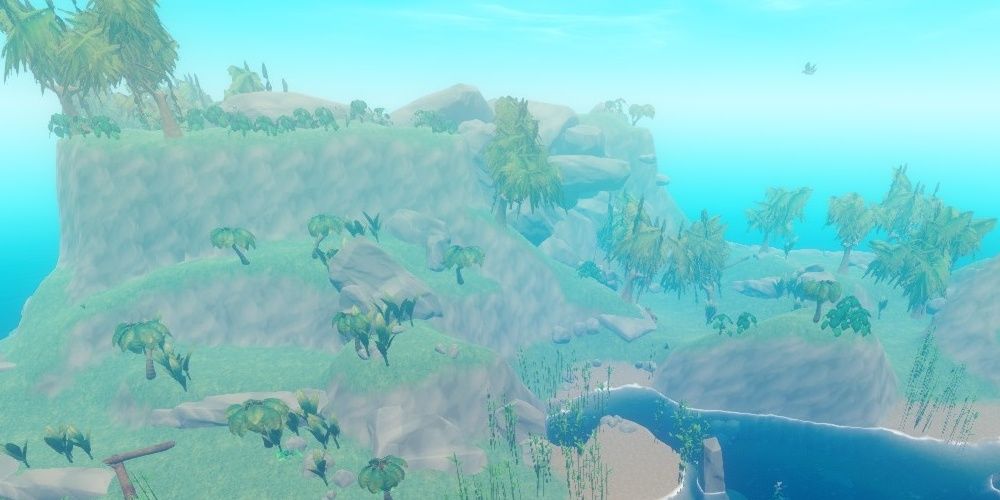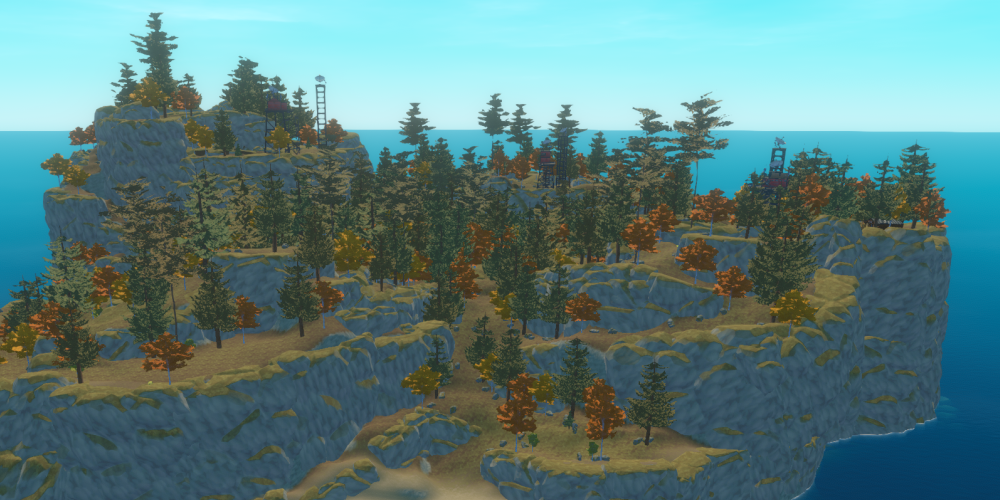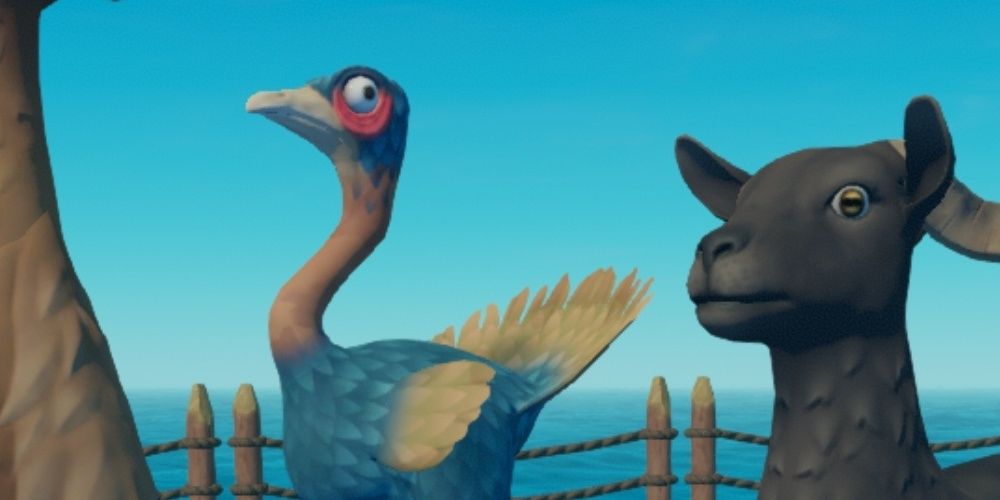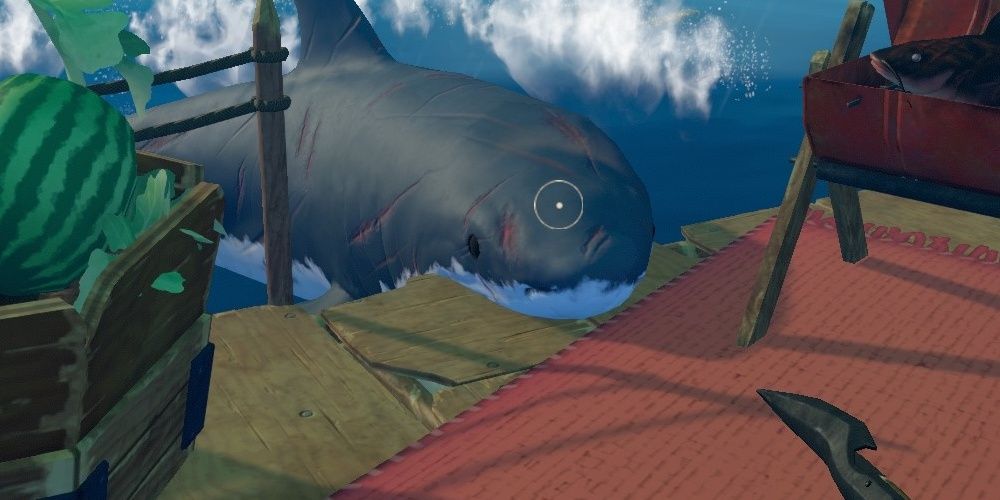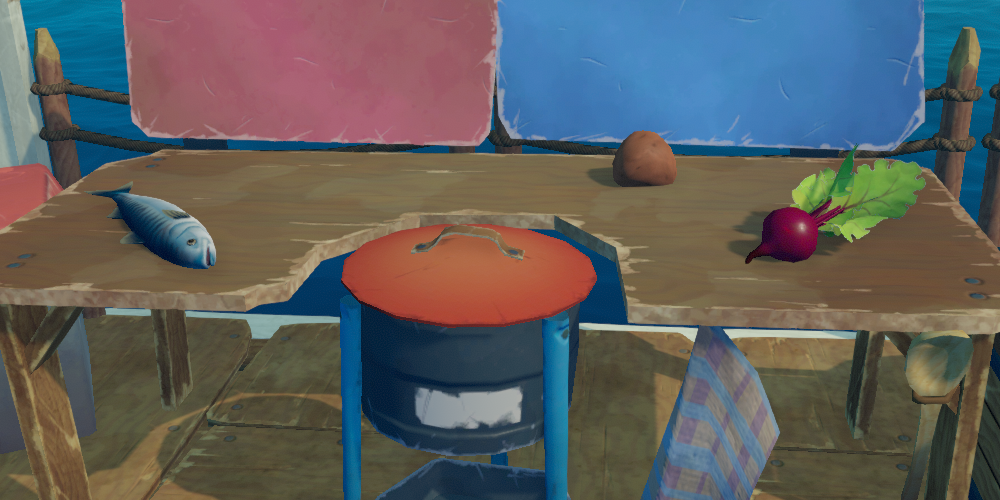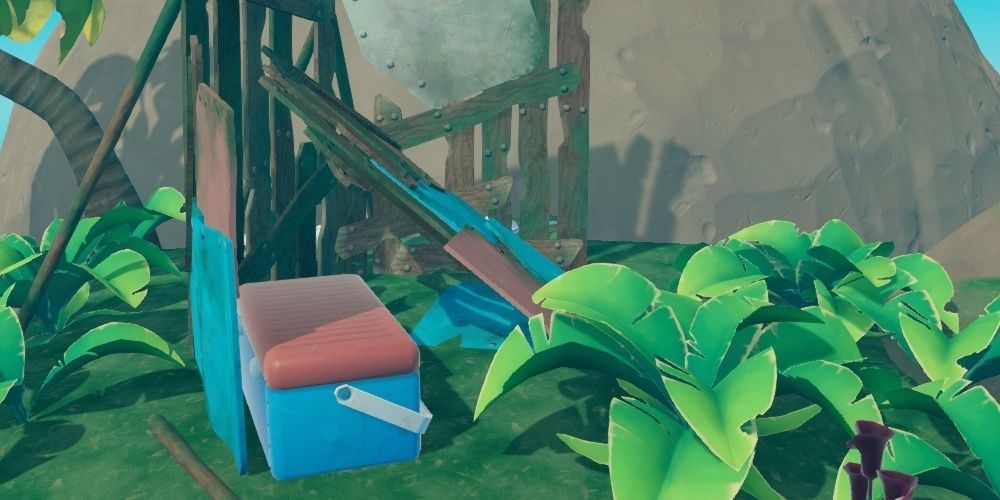Raft has been a success since it hit Steam Early Access in May 2018. While the game did not end up on Metacritic's top ten games of the decade list, the Steam forum sings its praises, using words like "perfectly balanced" and "challenging enough" when describing the sea-based co-op friendly game. Its objective is simple enough; build a raft, improve said raft, and sail the seas to explore the storyline — all while avoiding getting eaten by the Great White circling the raft 24/7.
As with most survival games, resource gathering and building a solid base is found at Raft's core. An awesome raft construction is not enough; the player needs food and water to survive. While water may be found at all times, surrounding the raft (just boil it first), the hunger tends to be more difficult to manage. Here follows the ultimate guide to finding food.
Updated September 17, 2022, by Patrick Armstrong: Raft is one of the most unusual entries in the survival genre. Instead of dropping the player in a forest or on a beach, the game sets players adrift with a few measly planks to keep them out of the jaws of a shark. Surviving at sea is difficult, and one of the biggest reasons is that food and water can be difficult to come by. Knowing how to stay nourished efficiently is something of an art, but there are also some tips and tricks to make finding food easier.
Scavenge The Sea
At the beginning of the game, the player is armed with nothing but a Plastic Hook. Thankfully, this is all that is needed to begin food hunting. Among the random debris that floats by the player, there will be barrels.
Players should throw the hook at them and haul them in; inside there may be Raw Potatoes or Raw Beet, all excellent sustenance for a beginner survivor. They are edible as they are or can be cooked with a Simple Grill for a slightly bigger boost to hunger.
Always Have A Hook
The hook is arguably the most important item in the game, especially for new players. Because it allows the player to reel in resources that are just out of reach, always having access to a hook is vital. Because hooks can break, it’s a good idea to always have the resources (1 plank and 2 plastic) necessary to craft a new one on hand.
While fishing and growing food are more obvious tricks when it comes to finding nourishment in Raft, almost every food-gathering activity becomes more difficult if the player’s hook breaks and can't be immediately replaced, since the player will be much more limited in what resources they can immediately access.
Protecting Your Food
Caring for one’s hunger is about more than just getting food, it’s about making sure one has high-quality food. Cooking is a vital skill to ensure the player is making the most of their hard-won food, but just because the player has built a grill doesn’t mean it’s safe.
One of the more obvious perils that come with life on a raft is damage to that raft. Sharks can damage and even destroy parts of the raft, and if an object happens to be sitting on the part of the raft that is destroyed, the object is lost too. For this reason, it’s wise not to build one’s grill or planter boxes near the edge of the raft, as they’re too vulnerable in the event of a shark attack. Putting food-related objects in the middle of the raft may make it look cramped at times, but it’s better than sabotaging one’s own food-preparation efforts due to a shark attack.
Crafting A Research Table
As is true in many survival games, Raft limits the number of recipes that the player knows how to craft at the beginner of the game. In order to unlock other recipes, the player will need to first craft and then use a Research Table. Crafting the table requires 14 planks and 2 scrap, and the player will need to make one if they want their character to survive the game's harsh world.
Once the player has crafted the table, they don’t automatically get access to more yummy meals, however. Instead, the player will need to donate one of each type of crafting ingredient to the table in order to unlock new recipes. The player probably already has these common items on hand, but if they don’t, it’s worth taking some time to grab them, as the sooner the player unlocks more research table options, the closer they are to meeting all of their food needs.
Fish Away
Fishing is not mentioned first on this list even though it is the most obvious choice when looking for food at sea. Once the Fishing Rod is made, however, the fishing may commence. There's not enough fish to make puns with.
Only six species in total may be caught (the Great Shark excluded, sadly - players need weapons to that one) of which two, the Salmon and the Catfish, may only be cooked using an Advanced Grill. Hold on to them nonetheless, as one of these fills players up four times as much as one smaller fish.
Grow Your Food
There is also the option of planting the found crops for a more stable source of food. All the player has to do is build a Small Crop Plot (use the Research Table) and the mini-farm is ready for business. There is also the possibility of finding seeds among the debris floating by; save these.
It is worth holding on to them until it is possible to unlock the bigger Crop Plots, not only for the fruit but for the extra resources each tree provides when harvested. Just remember to build a Scarecrow to keep any Seagulls away from the player's harvest!
Small Islands
It may not seem as much of a game in regards to stunning worldbuilding, but it is definitely a must to stop and explore the islands as players go along. This may seem too bothersome, as it requires the player to craft an Anchor which, in turn, may seem like a waste of resources. However, this could not be further from the truth.
Each small island not only contains various resources aplenty but the food is not possible to find in the sea as well. Harvesting these may provide the player with seeds that may be sown in Crop Plots on the raft, thereby providing a more varied diet for the survivor.
Big Islands
The big islands are similar to what may be found on the small islands, with a few food-wise important differences; Cave Mushrooms, Red Berries, and Silver Algae. The berries are relatively easy to spot, growing on bushes around the island, as are the mushrooms, lurking in the cave that exists on each island.
The difficult one to find is the Silver Algae, mostly because of the Great Shark; just throw in bait and the algae will be salvageable. While not edible in themselves they are important in filling and boosting dishes, it is worth collecting them whenever possible.
Evergreen Islands
This island, differing from the others with its distinct not-tropical appearance, introduces but one new ingredient; Honeycombs, which in turn can become Honey when combined with Glass. It is the only resource that is classified as a resource with edible properties in the game.
This is because it affects both Hunger and Thirst positively if eaten but is still listed as a resource. Not only that, but the player receives a bonus to Hunger much in the same way that prepared dishes do. These things considered, Honeycombs should not be underestimated in importance but gathered whenever possible.
Keep Animals
If the player so wishes, and is prepared to put in the extra work, there is also the option to keep animals available. The big islands have three animals that are possible to capture and bring on board the raft. Two of these animals will provide edibles.
The Goat may be milked using a Bucket, and the Clucker lays Eggs. Beeswarms may be caught with a Sweep Net, which is then used to build Beehives. Both of these items may be consumed as they are, or be part of more filling meals.
Hunt 'Em Down
Just as there are animals to capture, there are animals to hunt. No magic weapons are allowed though; only with a bow and arrow or spear in hand may the player may head out searching for the most filling meal ingredients. The big islands host Hogs and Screechers; the Evergreen has Bears to shoot; the player can even kill the Great White for Shark Meat.
Players report that Seagulls are possible to kill but are usually not worth the hassle due to how challenging it can be to snipe them. It is recommended to build armor before heading out, just to be safe; particularly when taking on some of the stronger opponents.
Cook Your Food
Remember to cook food! The beginning of the game only allows for a simple grill, with the option of unlocking more advanced cooking stations later on. Players should do this as soon as they can; it is part of improving the base camp. One of these, the Cooking Pot, is where the player can use any recipes found while scavenging.
These dishes are considered the best as they may give the player temporary bonuses for food, thirst, and health. Just remember to make some Clay Bowls to keep the food in. Con: The bowls are one-time-use only. Pro: As of now the food does not spoil, ever.
Learn Where To Hunt For Recipes
While not involving food searching per se, recipes certainly involve food efficiency and are therefore worth pursuing; custom recipes are unfortunately not a thing in this game. The odd one may show up in a debris barrel, but to actively search for them the player needs to turn to the chests scattered around the world.
They usually show up in Abandoned Huts, on Abandoned Rafts, and deep below the surface around the small islands. Top Tip: The recipes may be attached to the Cooking Pot headboard (or surrounding walls/poles) once found, for easy access.

